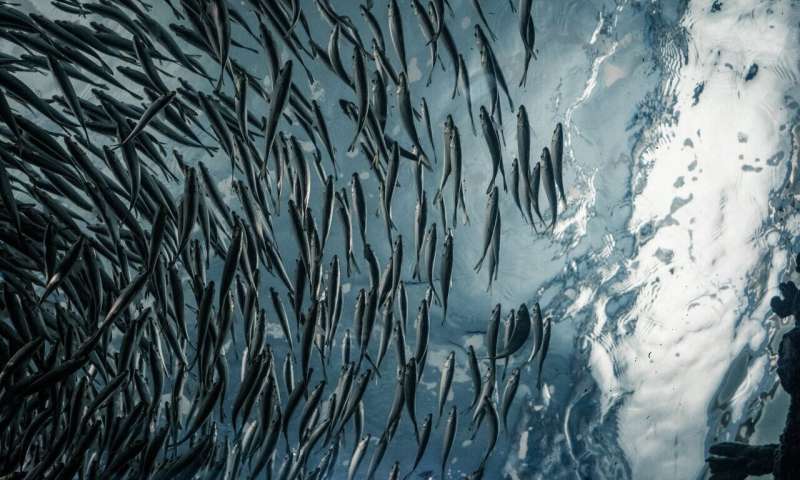Aquaponics treatment system inspired by sewage plants grows tastier crops and keeps fish healthy

A current challenge for sustainable aquaculture is how to increase the quantities of farmed fish while also reducing waste products that can lead to the accumulation of harmful fish sludge. New research aims to understand how this fish waste can be treated for use in aquaponics systems.
In this study in Frontiers in Plant Science, researchers from the Department of Marine Sciences at the University of Gothenburg, Sweden, demonstrate a novel and effective way to convert this fish sludge into plant fertilizer and therefore improving the nutrients available for plants in hydroponic plant cultivation. The lead author, Mr. Victor Lobanov, explains, "Fish sludge is a waste product made up of uneaten food and fish feces and is normally broken down by bacteria in the water. In addition to physically harming fish gills, excess carbon in the solids leads to excessive bacterial growth—diminishing oxygen in the water and hampering the ability of the fish to breathe. We wanted to find out whether this waste could be used to fertilize plants in aquaponics systems by removing the excessive carbon, yet preserving the minerals needed for growing crops."
Fish waste as fertilizer
The researchers investigated a potential solution inspired by sewage and wastewater treatment plants found around the world, called enhanced biological phosphorus removal (EBPR). This process was adapted by the researchers so that the risk of bacteria buildup in the water was reduced, but the minerals from the fish waste were soluble in the water and could therefore be biologically available for plants to take up.
They found that the solid treatment system they developed was highly effective at delivering nutrients from the fish waste to the aquaponic system in the form of a liquid fertilizer equally as efficiently as a commercial nutrient solution. Although the fertilizer did not meet plant needs entirely, as some nutrients such as manganese were missing, the researchers hope to optimize this system in future studies.
"Hopefully we can scale the system more efficiently in the future, not just for lettuce, as used in this study, but as well as for other plants, with the right number of fish corresponding to the size of the system. By further optimizing the breakdown of fish solids by the solid treatment system, we can also achieve a faster treatment rate and make the whole process more efficient," explains Mr. Lobanov.
Commercial fertilizer solutions often have very high levels of nitrogen, stimulating crops to swell and absorb large amounts of water, giving the appearance of improved growth, but often decreasing the amounts of minerals in the plant. Despite the fertilizer created by the solids treatment system containing lower levels of nitrogen than commercially available chemical fertilizers, plants were not nutrient-deficient. This suggests that the high nitrogen levels commonly used are in excess of what the plants need.
The authors hope that this finding will stimulate further research into the connections between plant nutrients, health and taste: "Our work shows that this type of cultivation is not only more sustainable, but it is also capable of providing nutrients in a form that is easily accessible to plants. Farmers can take this system and optimize it for their specific crops and production volumes, potentially even supplementing with additional nutrients if required."
More information: Victor P. Lobanov et al, Improving Plant Health Through Nutrient Remineralization in Aquaponic Systems, Frontiers in Plant Science (2021). DOI: 10.3389/fpls.2021.683690
Journal information: Frontiers in Plant Science
Provided by Frontiers





















